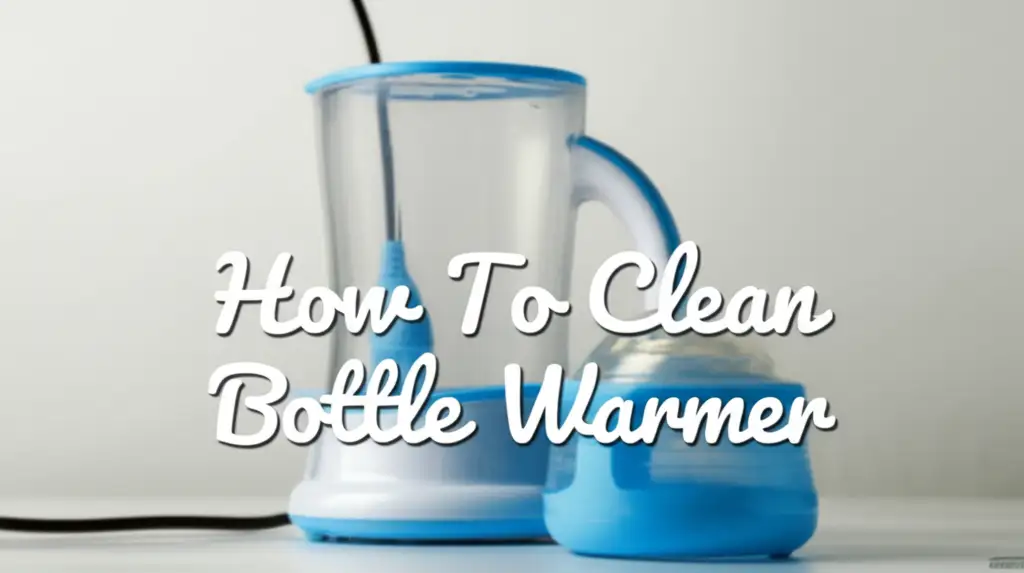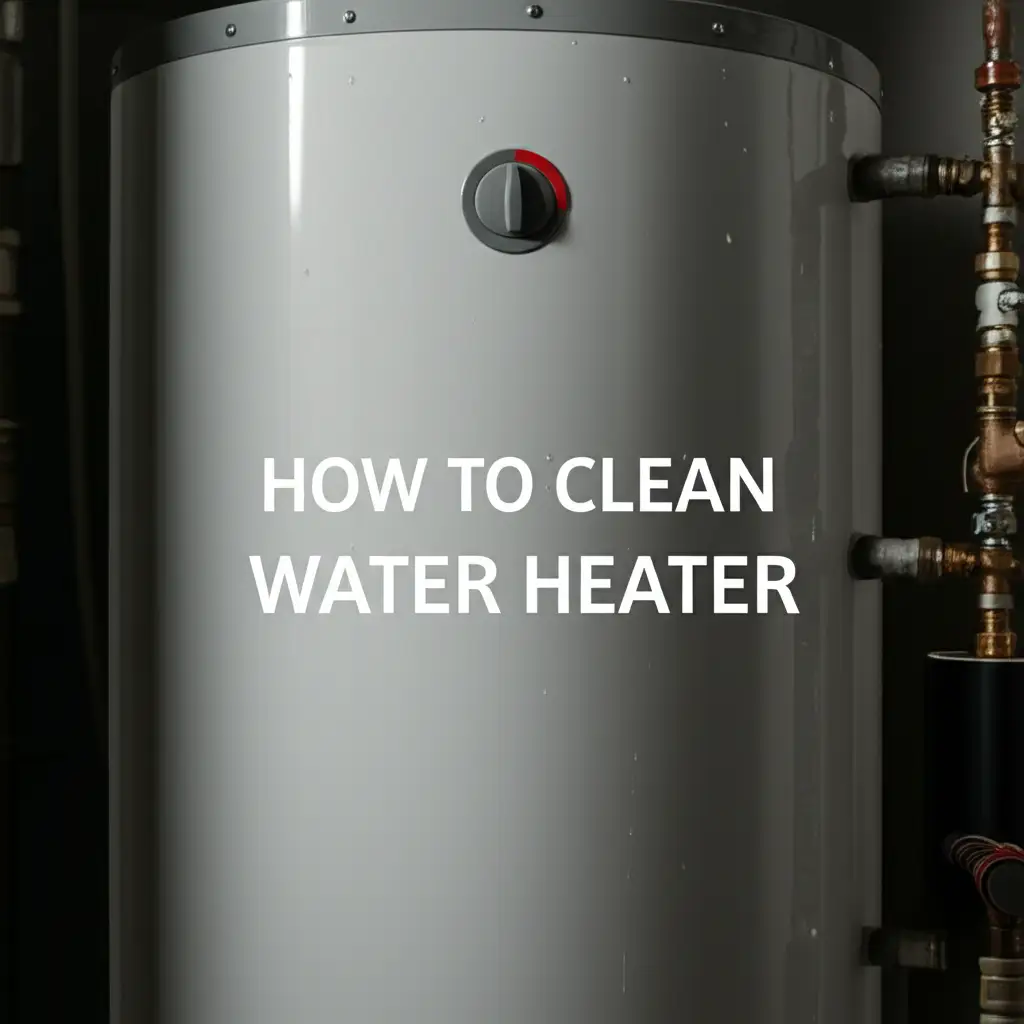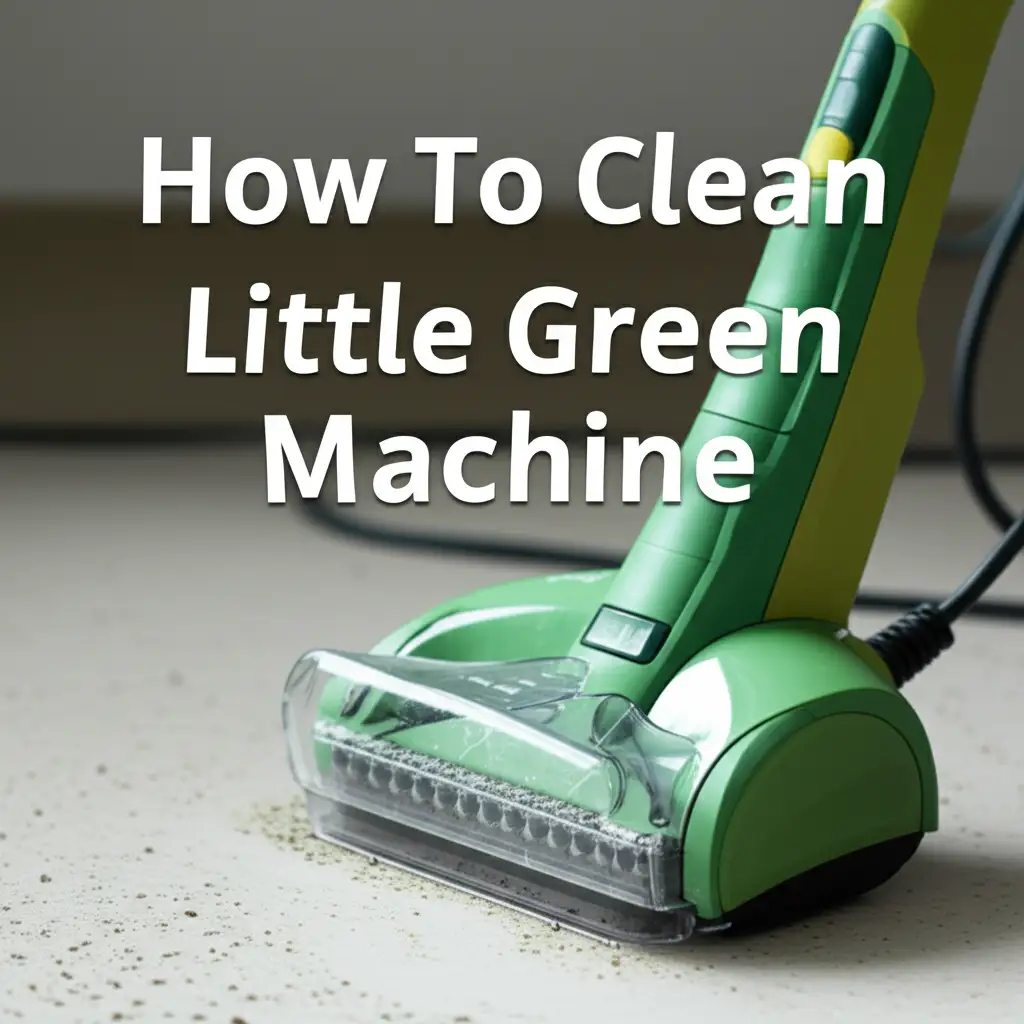· Baby Essentials · 15 min read
How To Clean Bottle Warmer

Clean Your Bottle Warmer: Easy Steps for Busy Parents
Preparing bottles for your baby is a daily task. You rely on your bottle warmer to heat milk quickly and safely. But do you ever think about cleaning this essential device? Keeping your bottle warmer clean prevents grime and ensures healthy feeding for your little one. Ignoring maintenance can lead to mineral buildup and reduced efficiency.
This comprehensive guide shows you how to clean bottle warmer units effectively. We cover daily routines, deep descaling methods, and preventative tips. You will learn the best products to use and how often to clean. A clean warmer helps protect your baby’s health. It also extends the life of your appliance. Let’s make cleaning simple and effective.
Takeaway
- Regular Cleaning: Wipe down your bottle warmer daily after each use. This prevents residue buildup.
- Descaling is Key: Perform a deep descaling every 2-4 weeks. Use vinegar or citric acid to remove mineral deposits.
- Safety First: Always unplug the warmer before cleaning. Use gentle, food-safe cleaning agents.
- Dry Thoroughly: Ensure all parts are completely dry before reassembly or storage. This prevents mold.
To clean a bottle warmer, first unplug it and let it cool. Wipe the exterior with a damp cloth. For internal mineral buildup, fill the reservoir with a 50/50 mix of white vinegar and water. Run a warming cycle, then let it soak for 30 minutes before rinsing thoroughly.
Why Cleaning Your Bottle Warmer Matters for Baby Health
Many parents ask, “Why do I need to clean my bottle warmer so often?” A bottle warmer deals with water and often residual milk. These elements create an ideal environment for bacteria and mold growth. Over time, mineral deposits from tap water also accumulate inside the heating element. This scale affects performance.
These mineral deposits, often seen as white, chalky residue, make your warmer work harder. This means it takes longer to heat bottles. It also consumes more energy. More importantly, accumulated grime can harbor harmful germs. These germs can transfer to your baby’s bottle.
Your baby’s immune system is still developing. Exposure to bacteria from an unclean warmer poses a risk. Regular cleaning keeps your baby safe. It maintains the warmer’s efficiency. You ensure healthy feeding and a long-lasting appliance. This simple habit protects your investment and your child’s well-being.
Essential Cleaning Supplies for Your Bottle Warmer
Before you start cleaning your bottle warmer, gather the right tools. You do not need many items. Simple household products work best. Avoid harsh chemicals. Harsh cleaners can leave residues that harm your baby.
Here is a list of what you need:
- White Vinegar: This is your primary descaling agent. It breaks down mineral deposits effectively. Vinegar is also natural and safe. You can use it to clean your shower with vinegar too.
- Distilled Water: Using distilled water instead of tap water for cleaning helps prevent new mineral buildup. Tap water often contains minerals.
- Soft Cloths or Sponges: These are for wiping surfaces. Use a non-abrasive material. This prevents scratching your warmer.
- Small Brush: A soft brush, like an old toothbrush, helps clean crevices. It reaches tight spots.
- Dish Soap: A mild, unscented dish soap is good for cleaning the exterior. It removes greasy residues.
- Citric Acid (Optional): This is an alternative to vinegar for descaling. It is odorless. You can find it in the baking aisle.
- Paper Towels: Use these for drying. They absorb moisture well.
- Gloves (Optional): Wear gloves if you have sensitive skin.
Having these items ready makes the cleaning process smooth. You will work efficiently. This ensures a thorough clean every time.
Daily Cleaning Routine: Keeping Your Bottle Warmer Fresh
Daily cleaning prevents major buildup. It saves you time in the long run. A quick wipe-down after each use is enough for regular maintenance. This routine keeps your bottle warmer hygienic and ready.
Follow these simple steps for daily care:
- Unplug and Cool: Always unplug the warmer first. Let it cool down completely. This prevents burns and electrical hazards.
- Empty Water: Pour out any remaining water from the reservoir. Stagnant water can lead to mineral deposits.
- Wipe Interior: Use a soft, damp cloth to wipe the inside of the heating chamber. Focus on any spills or condensation.
- Clean Exterior: Wipe the outside surfaces with a damp cloth and a drop of mild dish soap. This removes dust and smudges.
- Dry Thoroughly: Use a dry cloth or paper towel to dry all surfaces. This prevents water spots and mold growth.
- Clean Basket/Lid: If your warmer has removable parts like a basket or lid, wash them with warm, soapy water. Rinse well and dry.
This daily routine takes only a few minutes. It is a small effort for big benefits. Consistent daily care reduces the need for frequent deep cleaning. It ensures your baby’s bottles are always warmed in a clean environment. This proactive approach supports both hygiene and warmer longevity. You will find this simple habit makes a big difference in maintaining your appliance.
Deep Cleaning and Descaling Your Bottle Warmer
Mineral buildup, also known as scale, is a common problem. It appears as white, crusty deposits. Hard water causes this buildup over time. Descaling removes this scale. You should deep clean and descale your bottle warmer every 2-4 weeks. If you have very hard water, do it more often.
Here is how to descale your bottle warmer:
- Unplug and Prepare: Ensure the warmer is unplugged and cool. Remove any removable parts.
- Prepare Descaling Solution: Mix equal parts white vinegar and water. For example, use one cup of vinegar and one cup of water. This creates a strong, safe cleaning agent. You can also use citric acid. Dissolve one tablespoon of citric acid in one cup of warm water.
- Fill Reservoir: Pour the descaling solution into the warmer’s water reservoir. Fill it to the maximum water line. Do not overfill.
- Run a Cycle: Close the lid. Turn on the warmer and let it run a full warming cycle. This heats the solution. The heat helps the acid break down the minerals.
- Soak Time: After the cycle finishes, unplug the warmer. Let the solution sit in the reservoir for 20-30 minutes. For heavy buildup, you can let it soak for an hour. Sometimes, even cleaning the bottom of a pan requires soaking to remove stubborn deposits.
- Empty and Rinse: Pour out the vinegar solution. You might see flakes of mineral deposits. Rinse the reservoir thoroughly with fresh water several times. Swirl the water around. Pour it out. Repeat until no vinegar smell remains.
- Wipe Away Residue: Use a soft cloth or a small brush to gently scrub any remaining scale. Dip the brush in fresh water. Wipe the interior surfaces.
- Final Rinse Cycle: Fill the reservoir with clean water. Run another warming cycle. This helps flush out any lingering vinegar or scale particles. Empty and dry.
- Dry Completely: Dry all parts thoroughly with a clean, dry cloth. Ensure no moisture remains. This prevents mold growth.
This deep cleaning process revitalizes your bottle warmer. It restores heating efficiency. It also keeps the appliance clean and safe for your baby’s bottles. Remember, regular descaling extends the life of your warmer. It ensures consistent performance.
Cleaning Specific Bottle Warmer Components
Different parts of your bottle warmer need specific attention. While the main descaling targets the heating element, other components collect grime. Cleaning each part ensures overall hygiene. This approach helps you maintain a pristine appliance.
Let’s look at key components:
Heating Plate/Residue Area
The heating plate is where most mineral buildup occurs. This area needs the most attention during descaling. Follow the deep cleaning steps above using vinegar or citric acid. After descaling, you might find some loose flakes. Wipe these away gently. Make sure the surface is smooth and free of any gritty residue. This helps maintain efficient heat transfer.
Removable Baskets and Lids
Many bottle warmers come with a removable basket or ring for holding bottles. Lids also accumulate condensation and residue. These parts are often dishwasher-safe. Check your user manual first. If not, wash them by hand. Use warm water and mild dish soap. Scrub gently with a soft sponge. Rinse these parts very well. Ensure no soap residue remains. Air dry completely before putting them back. Clean baby items, including bottles themselves, also require careful cleaning, similar to how one would clean a water bottle.
Exterior Surfaces
The outside of your bottle warmer can gather dust, spills, and fingerprints. Use a damp cloth with a small amount of mild dish soap. Wipe down all exterior surfaces. Do not let water get into electrical components. Pay attention to buttons and control panels. These areas can collect grime. Finish by wiping with a clean, dry cloth. This leaves the warmer looking new and clean.
By focusing on each component, you achieve a comprehensive clean. This attention to detail improves hygiene. It also keeps your bottle warmer in top condition.
Preventative Measures for a Cleaner Bottle Warmer
Prevention is always easier than cleaning up a mess. Simple habits can greatly reduce the need for deep cleaning your bottle warmer. These tips help keep mineral buildup and grime at bay. You save time and effort in the long run.
Consider these preventative steps:
- Use Distilled or Filtered Water: Tap water contains minerals. These minerals cause scale buildup. Using distilled or filtered water significantly reduces mineral deposits. This extends the time between descaling. It also maintains heating efficiency. Think of it like maintaining a water filter; using better water prolongs life.
- Empty After Each Use: Do not leave water in the reservoir after you finish warming a bottle. Stagnant water encourages mineral buildup and potentially bacterial growth. Pour out any remaining water immediately. This simple step makes a big difference.
- Wipe Down Daily: A quick wipe of the interior and exterior after each use prevents residue from drying and hardening. Use a clean, damp cloth. This habit stops small spills from becoming stubborn stains.
- Dry Thoroughly: After emptying, use a clean cloth to dry the interior completely. Moisture promotes mold growth. Ensure the reservoir is dry before you store the warmer or use it again.
- Follow Manufacturer Instructions: Your bottle warmer’s manual has specific care instructions. Always read and follow them. Some warmers have unique features or materials. The manufacturer knows best how to care for their product. Adhering to these guidelines helps prevent damage. It ensures the warmer functions correctly for years.
Implementing these preventative measures creates less work for you. It keeps your bottle warmer clean and efficient. This focus on prevention ensures a hygienic environment for your baby’s bottles. It also helps your appliance last longer.
Troubleshooting Common Bottle Warmer Cleaning Issues
Even with regular cleaning, you might encounter some common issues. Stubborn stains or persistent odors can be frustrating. Knowing how to troubleshoot these problems helps you keep your bottle warmer pristine. I will walk you through solutions for typical cleaning challenges.
Stubborn White Residue (Heavy Scale)
If a regular descaling cycle does not remove all the white residue, you have heavy scale. This often happens with very hard water or infrequent cleaning.
- Solution: Increase the soaking time. After running the vinegar-water cycle, let the solution sit for several hours, or even overnight. Then, use a small, soft brush (like an old toothbrush) to gently scrub the affected areas. Rinse thoroughly multiple times. You might need to repeat the descaling process. For extremely tough spots, you can make a paste of baking soda and a few drops of water. Apply it to the residue. Let it sit for 15-30 minutes, then gently scrub. Rinse completely.
Persistent Vinegar Smell
After descaling, a faint vinegar smell might linger. This is common but easy to fix.
- Solution: Rinse the warmer reservoir several times with fresh water. Then, fill it with clean water and run one or two warming cycles without a bottle. This helps flush out any remaining vinegar aroma. Let the warmer air dry completely in a well-ventilated area. The smell should dissipate.
Mold or Mildew Spots
Mold or mildew can appear if the warmer is not dried properly. These spots often look black, green, or fuzzy.
- Solution: Use a solution of one part white vinegar to one part water. Dampen a cloth with this solution and wipe the moldy areas. Vinegar is a natural mold killer. For isolated spots, you can use a cotton swab. Scrub gently. Rinse the area thoroughly with clean water afterward. Ensure very good ventilation when cleaning mold. Then, dry the warmer completely. Regularly cleaning the exterior and interior, similar to how one might clean the bottom of an oven, helps prevent such issues.
Rust Spots
If your warmer has metal components, rust can occasionally appear. This is rare for well-maintained warmers.
- Solution: Rust on bottle warmers is usually surface rust. You can try a paste made from baking soda and lemon juice. Apply it to the rust spot. Let it sit for 15-30 minutes. Gently scrub with a soft brush. Rinse well and dry immediately. If rust is extensive, it might be time to consider replacing the warmer for safety.
By tackling these common issues with the right approach, you ensure your bottle warmer remains clean and functional. Consistent care prevents most of these problems from arising.
Frequency of Cleaning: How Often Should You Clean Your Bottle Warmer?
Knowing how often to clean your bottle warmer is crucial for hygiene and efficiency. The frequency depends on several factors. These include how often you use it and your water hardness. I will provide general guidelines to help you schedule your cleaning routine.
Daily Cleaning
You should perform a light cleaning every day or after each use. This involves:
- Emptying any leftover water.
- Wiping the interior and exterior with a damp cloth.
- Drying all surfaces thoroughly.
This daily wipe-down prevents immediate residue buildup. It stops mold and mildew from starting. This simple step takes only a few moments. It contributes greatly to hygiene.
Weekly Deep Clean (Optional)
If you use your warmer very frequently, or if your tap water is moderately hard, consider a mini-deep clean once a week. This is less intense than a full descaling.
- Fill the reservoir with plain water.
- Run a cycle.
- Empty the water and scrub the interior gently with a soft brush.
- Rinse and dry.
This helps loosen any new, soft mineral deposits before they harden.
Bi-Weekly to Monthly Descaling
You should perform a full descaling using vinegar or citric acid every 2 to 4 weeks. This is the critical step for removing hard mineral scale.
- Hard Water Areas: If you live in an area with very hard water (you see white residue quickly), descale every two weeks.
- Soft Water Areas: If your water is soft, you might get away with descaling once a month.
- Frequency of Use: If you use your warmer multiple times a day, descale more frequently. If it’s used only occasionally, less often is fine.
Look for signs of buildup. If you see white residue forming, or if the warmer takes longer to heat, it’s time to descale. Do not wait for severe buildup. Regular descaling maintains performance. It also prolongs the life of your appliance. A proactive approach to cleaning ensures your bottle warmer serves your family well for a long time.
FAQs About Bottle Warmer Cleaning
Here are some frequently asked questions about cleaning bottle warmers. These answers provide quick solutions to common concerns.
Can I use bleach or harsh chemicals to clean my bottle warmer?
No, never use bleach or harsh chemicals. These substances can leave harmful residues. These residues might contaminate your baby’s milk. They can also damage the warmer’s internal components. Stick to white vinegar, citric acid, or mild dish soap for safe and effective cleaning.
What causes the white residue in my bottle warmer?
The white residue is mineral buildup, also known as scale. It comes from minerals present in your tap water, especially in hard water areas. When water heats and evaporates, these minerals are left behind. Regular descaling is necessary to remove this.
Is vinegar safe for all bottle warmers?
Yes, white vinegar is generally safe and recommended for descaling most bottle warmers. It is a natural acid that dissolves mineral deposits. Always check your specific bottle warmer’s manual first. Some manufacturers might recommend their own descaling solution, but vinegar is usually a safe and effective alternative.
How do I dry my bottle warmer after cleaning?
After rinsing, use a clean, dry cloth to wipe all surfaces. Pay special attention to the heating chamber. You can then leave the lid open and let the warmer air dry completely for several hours. Ensure no moisture remains before storage or next use. This prevents mold and mildew.
Can I put my bottle warmer in the dishwasher?
No, most bottle warmers are not dishwasher-safe. The electrical components are not designed for immersion in water. You can usually wash removable parts like baskets or lids in the dishwasher, but always check your user manual first. The main unit requires hand-cleaning.
How do I know if my bottle warmer needs descaling?
You will notice white, chalky residue inside the heating chamber. The warmer might also take longer to heat bottles, or it may produce less steam. These are clear signs that mineral buildup is affecting performance. Descaling will restore its efficiency.
Conclusion: A Clean Warmer, A Happy Baby
Keeping your bottle warmer clean is a simple yet vital task for any parent. We have covered why cleaning is important, the tools you need, and detailed steps for both daily maintenance and deep descaling. You learned that regular care prevents harmful bacteria and mineral buildup. This ensures your baby’s bottles are always warmed in a safe environment.
Remember, a quick wipe-down after each use makes a big difference. Descaling with vinegar every few weeks keeps your appliance efficient. By following these steps, you protect your baby’s health. You also extend the life of your bottle warmer. Make cleaning your bottle warmer a regular part of your routine. This small effort provides big peace of mind. For more helpful cleaning guides for your home, visit our website. Your clean home starts here.
- bottle warmer cleaning
- descaling bottle warmer
- baby bottle warmer
- appliance cleaning




